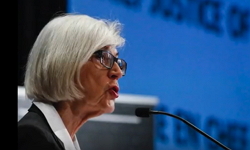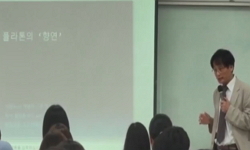This paper examines changes in Korean women’s social status over the last 30 years, both before and after the enactment of the Women’s Development Act in 1995. Social status is a social form of differentiation and value assessment, and the status ...
http://chineseinput.net/에서 pinyin(병음)방식으로 중국어를 변환할 수 있습니다.
변환된 중국어를 복사하여 사용하시면 됩니다.
- 中文 을 입력하시려면 zhongwen을 입력하시고 space를누르시면됩니다.
- 北京 을 입력하시려면 beijing을 입력하시고 space를 누르시면 됩니다.
https://www.riss.kr/link?id=A82575269
- 저자
- 발행기관
- 학술지명
- 권호사항
-
발행연도
2011
-
작성언어
English
- 주제어
-
KDC
337
-
등재정보
SSCI,SCOPUS,KCI등재
-
자료형태
학술저널
- 발행기관 URL
-
수록면
1-39(39쪽)
- 제공처
- 소장기관
-
0
상세조회 -
0
다운로드
부가정보
다국어 초록 (Multilingual Abstract)
This paper examines changes in Korean women’s social status over the last 30 years, both before and after the enactment of the Women’s Development Act in 1995. Social status is a social form of differentiation and value assessment, and the status of men and women are positioned differently within its process. Thus, social status is not naturally granted, but it shows the vicissitudes of society. Women’s social status appears in the context of overall society, and this research examines the type variation of gender equality- as gender neutrality, gender recognition, and de-gendering or deconstructing the gender- as the status changes in politics, economy, human rights through statistics, and the status changes through laws and systems.
By tracing the improvement in Korean women’s social status over the last 30 years, I show that women’s social status has become practically equal to men’s in many social sectors, such as in occupation, legal rights, education, political participation, and other areas. However, despite all this evidence of official equality, there are still questions about the true improvement of women’s social status and gender equality due to remaining inequalities, such as the scarcity of women in professional fields, the prevalent imbalance in housework, and the increase of sexual and domestic violence towards women, the coherent belief in gender differences, and others. In the future, the endeavor for the improvement of women’s social status should explain the paradoxical inequality hidden underneath the superficial success that has been seen thus far.
동일학술지(권/호) 다른 논문
-
Gender Wage Differentials among Disabled People : Evidence from South Korea
- 숙명여자대학교 아시아여성연구원
- Kihong Park
- 2011
- SSCI,SCOPUS,KCI등재
-
Analysis of Core Competencies of Female Korean University Students
- 숙명여자대학교 아시아여성연구원
- Mi-sug Jin
- 2011
- SSCI,SCOPUS,KCI등재
-
Gender Comparison of Employment and Career Development in China
- 숙명여자대학교 아시아여성연구원
- Wei Guoying
- 2011
- SSCI,SCOPUS,KCI등재
-
The Change of Women's Social Status in Korea
- 숙명여자대학교 아시아여성연구소
- Kim Young Lan
- 2011
- SSCI,SCOPUS,KCI등재







 DBpia
DBpia





